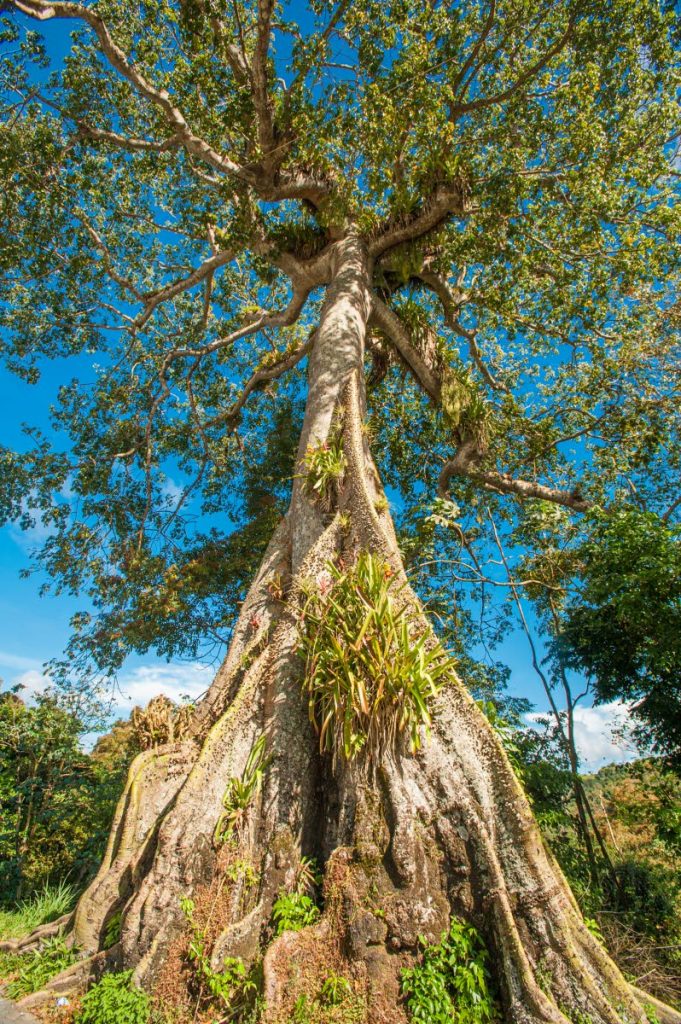Ghost lore: The value of Tobago's jumbie stories

DR RITA PEMBERTON
Tobago has been characterised by the heritage from which its culture and traditions emanated. Since emancipation, the lifestyle of Tobagonians has reflected close affinity to all aspects of the island’s heritage. The people of Tobago pay close attention to politics and, as illustrated in previous columns, have developed a strong political culture which is marked by critical assessment and re-assessment of political figures.
However, while the political culture is alive and well, over time there has been attrition in some other areas of culture. Where traditions are concerned, there are ongoing attempts to maintain some features of heritage but it does not appear that much effort has been devoted to cultural revival.
It has always been assumed that the cultural patterns are permanent features of the island but some activities and items have less visibility than in the years gone by and are in need of restorative intervention for their preservation and maintenance. As a diversion from things political, the focus of this column will be placed on the first of three areas where such an intervention is needed.
The spirit world has always been an integral part of life in Tobago, which is related to the need to understand what happens after death. There are many jumbie stories, which vary from one part of the island to another, and also from one activity to another, but there are none so numerous as those from people who engage in nocturnal activities and those who work in cemeteries.
These stories all contain a religious element and are all based on the belief that the spirits of the ancestors return to the living world for one reason or another.
While to some these jumbie accounts are perceived as having only humorous value, there is a growing academic interest in folklore which seeks to revive the act and the art of telling folk-tales to children to prevent the extinction of this cultural practice. One dimension of this revival which is of relevance to Tobago, is an interest in ghost lore, which in Tobago is simply called jumbie stories. These studies examine the stories, their practices and their origins in order to understand their significance and social role and also, in an attempt to revive them.
The subject of ghost lore is highly misinterpreted and reflects an attempt to deal with and understand the supernatural. It is interesting to note that many of Tobago’s jumbie stories are related to large trees and rum, reflecting a combination of influences – indigenous, African with a European-developed product, which could well provide evidence of the interplay of the forces which affected the development of culture on the island.
Jumbie stories/ghost lore should not be dismissed as mere superstitious trivia, because they provide clues to the issues which were important to people during particular periods, and the traditions and psychology of the people and societies which embrace them.
In addition, they serve to control human behaviour in important ways and merit serious investigation.
Certainly, in Tobago, many people over 60 have either bitten their fingers after pointing to a grave or refuse to eat the tamarind or other fruit from trees in the cemeteries.
In the face of popular perceptions of modernisation, the number of these stories which are known to the present population has dwindled before an opportunity for their proper analysis has occurred. While it is well accepted that religious syncretism occurred in enslaved societies, the extent to which a similar syncretic occurrence is reflected in the island’s jumbie stories remains an unexplored area that deserves research attention.
In the hunting fraternity, there is certainly a belief in the importance of the ancestors to everyday life. Hunters perform a ritual which seeks the assistance of the ancestors to obtain good game before the hunting trek begins. For this, a large tree called the Boldish tree, in some areas, is central. At the roots of the tree the hunters make an appeal to the ancestral spirits with the call: “All good friends and family, come and have a drink, east, west, north and south,” before throwing a healthy serving of rum at the roots of the tree for ancestral consumption.
If, as the night progresses, the game is still slow, the hunters will make another appeal to the spirits, begging them: “Ah waterman, clear mi sight, clear mi sight,” and it is said after that plea has been made, usually an increased game presence is detected.
These practices are related to the notion that the ancestors return to their home community and would help to guide the actions of the living.
Sometimes the hunting dogs are misled by scent and movement to an area and as they frantically dig in vain, a mocking, crackling laughter can be heard when there was no one in sight. This is interpreted as an indication that a not so helpful spirit was around.
There have been many reports of jumbie sightings/ presence across the island. These have traditionally been apparitions in white that move on the ground and rise in the air or who stimulate feelings of head enlargement or cause dogs to bark uncontrollably at something unseen.
Gardeners in isolated rural areas recall “drum ah day" – hearing drums during the daytime while tending their crops. Night workers and partygoers relate encounters on the road when returning home late at night and early morning, and there were different practices to deal with them.
The question here is, do the departed return as jumbies, why and which ones were likely to do so?
Gravediggers have their own jumbie beliefs. It is believed that if certain protocols are not followed when digging graves, particularly when opening those that were previously used, disaster will befall the person.
One such is said to have occurred to a gravedigger who had omitted a particular essential practice which stimulated the anger of the spirits, which caused him to fall into the grave and injure himself.
Rum is also used on such occasions as an essential ingredient in the art of quelling the angry spirit and seeking its co-operation.
In addition there is the well-established belief that spirits live in the silk cotton trees which were commonly located on plantations and were used to hang resisting enslaved Africans. The historical silk cotton tree on the Northside Road, which is now a major attraction for visitors, is a case in point. Workmen refused to comply with the order to cut down the tree when the administration wanted to widen the road. Was it simply a fear-driven response?
These jumbie stories should not be allowed to disappear, but should be documented and maintained for academic scrutiny which could result in enhanced understanding of Tobago’s social evolution. Today this silk cotton tree stands as a symbol of ancestral connections, and the only monument to enslaved resistance on the island.



Comments
"Ghost lore: The value of Tobago’s jumbie stories"